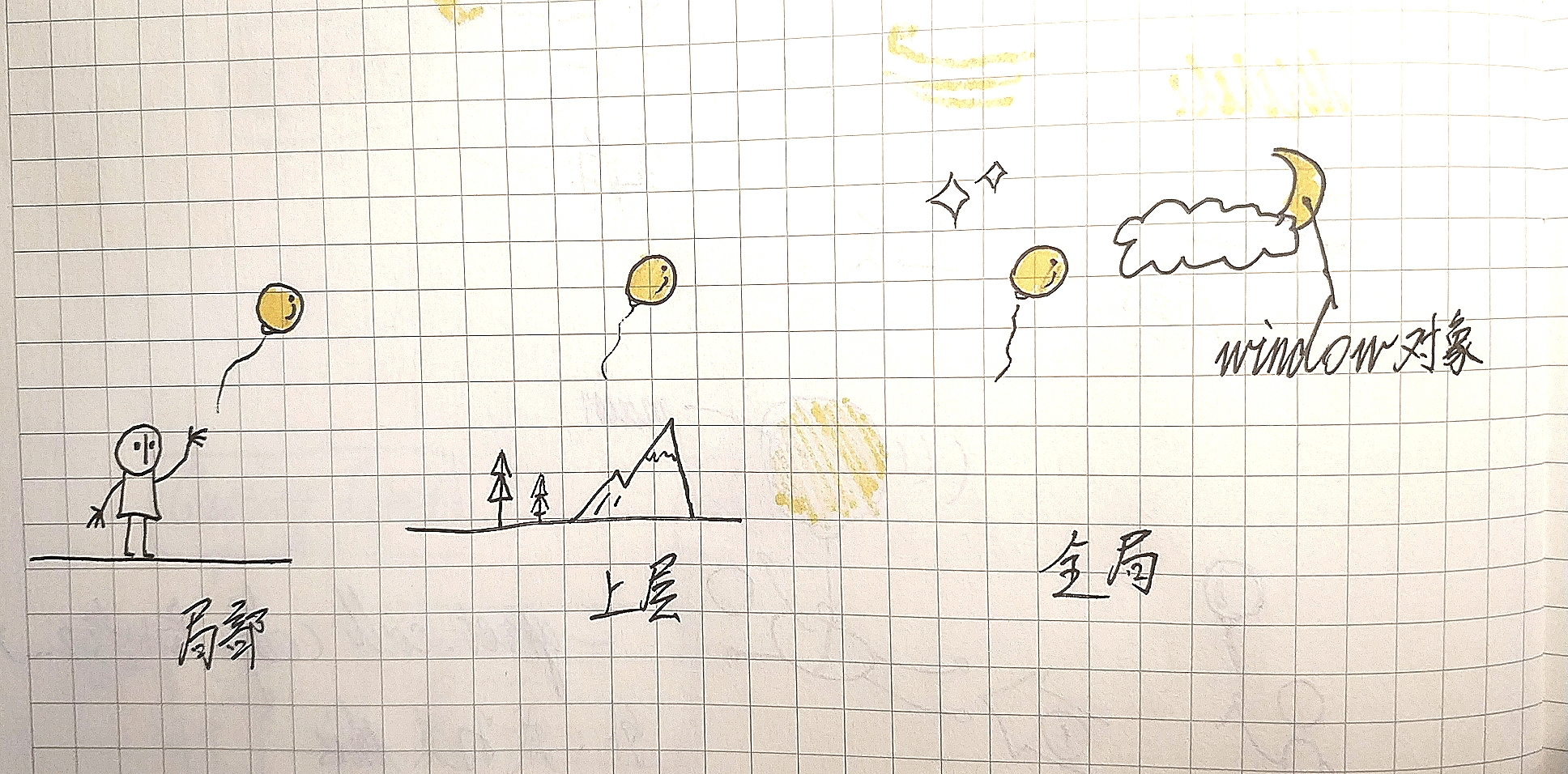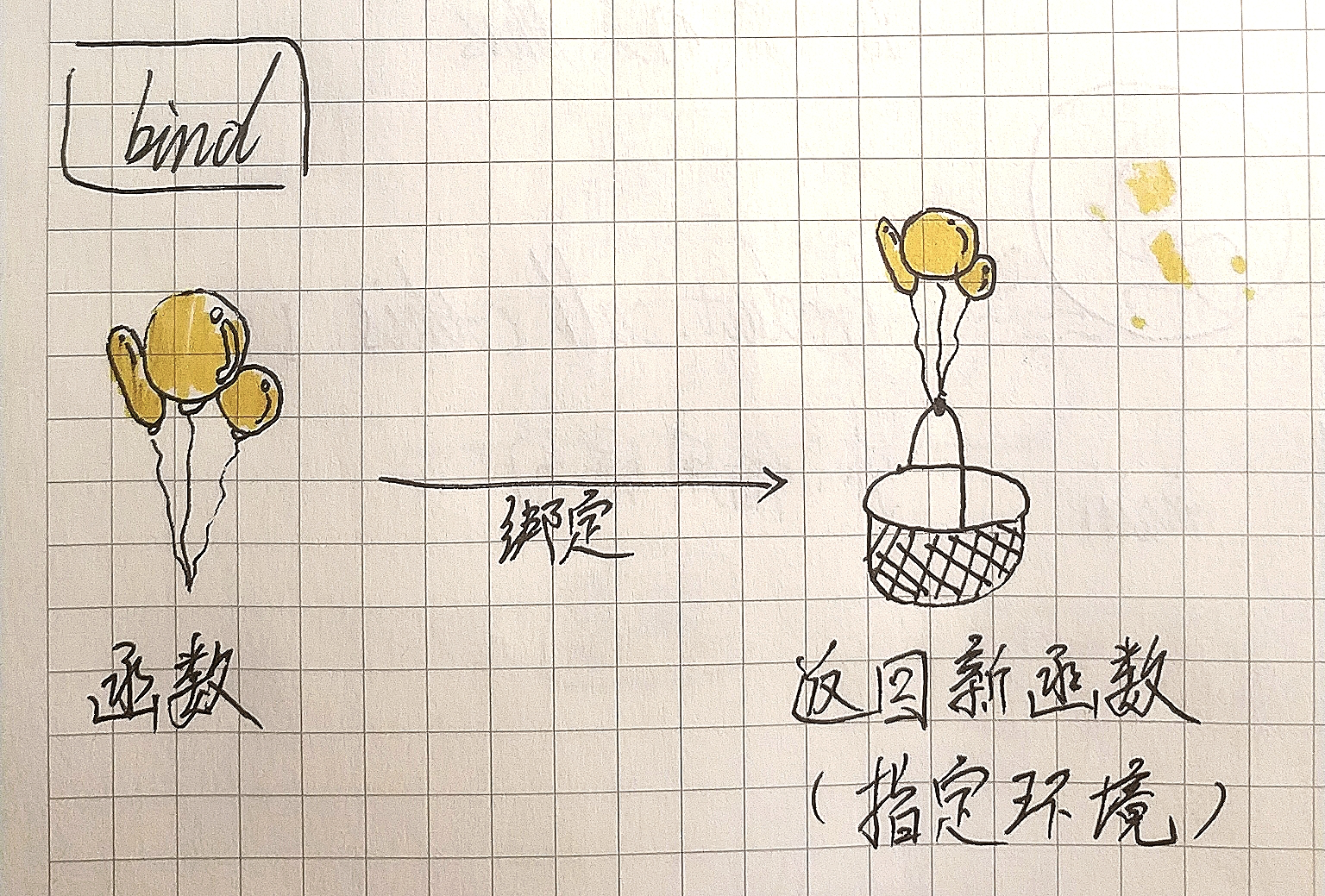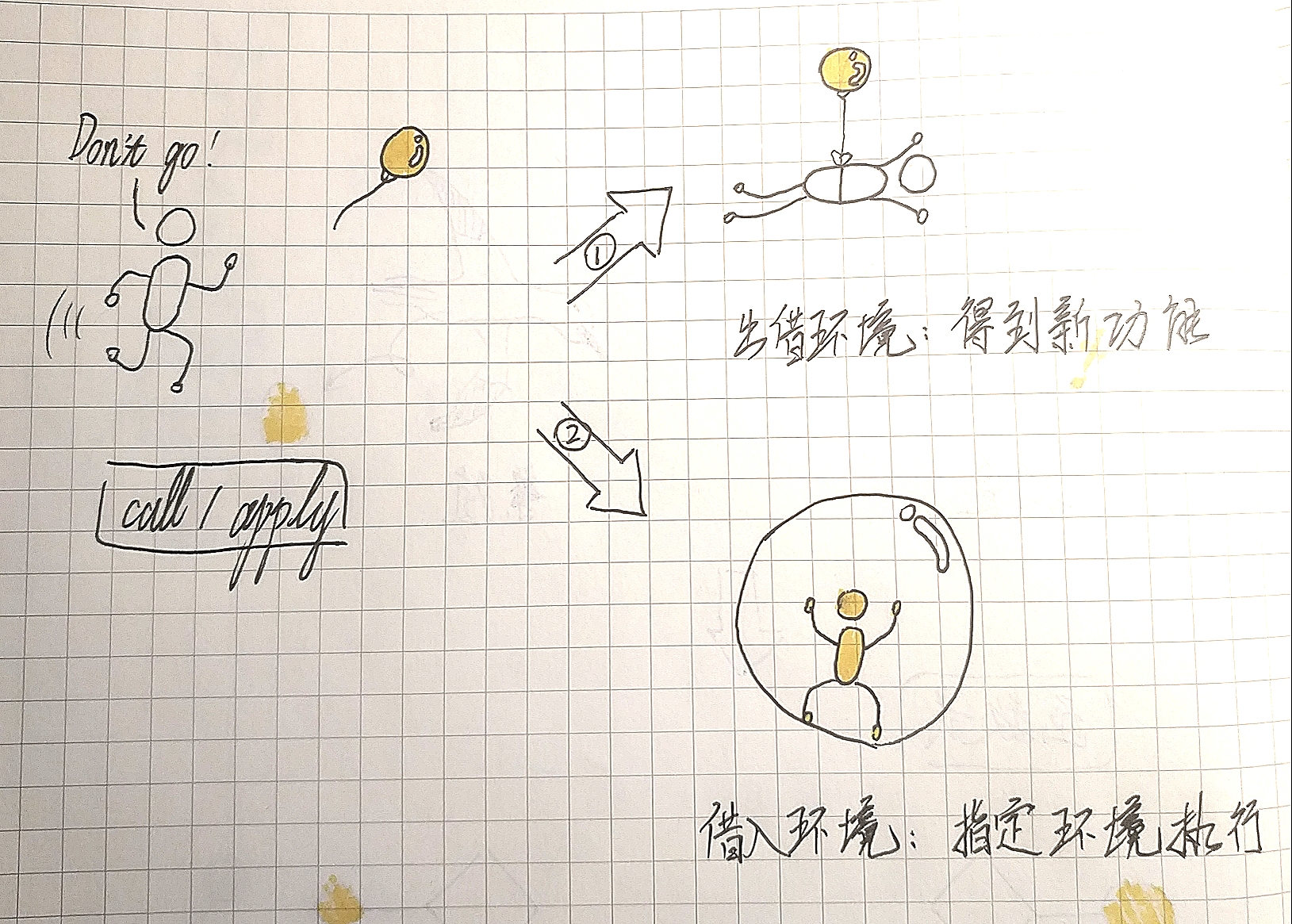[JS Grammar scope and binding icon
Others
2019-09-14 14:08:23
views: null
Cause: Scope climbing
- JavaScript allowed inside the body of the function, refer to the current environment of other variables.
- The current environment variable is not found, then climb onto the tile floor looking until you climb to the global (window) so far.
- this refers to is the current environment, so its value is decided according to the environment when the function is called, it is not the same.

A way to bind: bind
- bind can specify any context function.
- bind handler will not be executed immediately, only to return a new function.

Binding Second way: call / apply
- In the binding terms of scope, the same functions both call / apply, can be replaced. Except that parameters passed way.
- call / apply handler is called immediate, it does not return a new function. So the difference between the way that bind usage scenario, rather than function.
- This mode is mainly used
- When the class definition, the current lending environment, to achieve the effects of a succession:
function Product(name, price) {
this.name = name;
this.price = price;
}
function Food(name, price) {
Product.call(this, name, price);
// <==> Product.apply(this, [name, price]);
// <==> Product.bind(this, name, price)();
this.category = 'food';
}
console.log(new Food('cheese', 5));
- When the function calls to other environments as this:
function greet() {
var reply = [ this.animal, 'typically sleep between', this.sleepDuration ].join(' ');
console.log(reply);
}
var obj = {
animal: 'cats', sleepDuration: '12 and 16 hours'
};
greet.call(obj); // cats typically sleep between 12 and 16 hours

Reference material
Origin www.cnblogs.com/mazhaokeng/p/11518825.html


